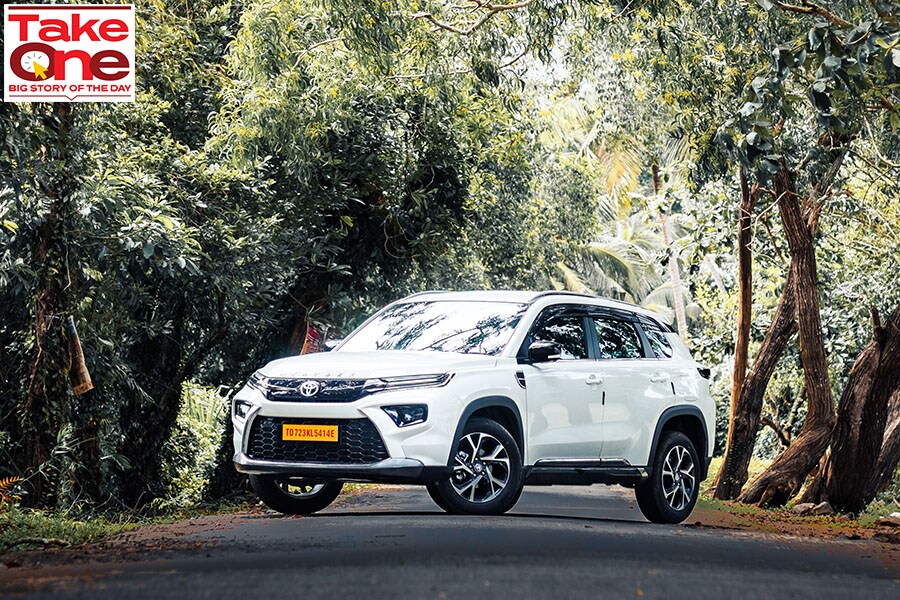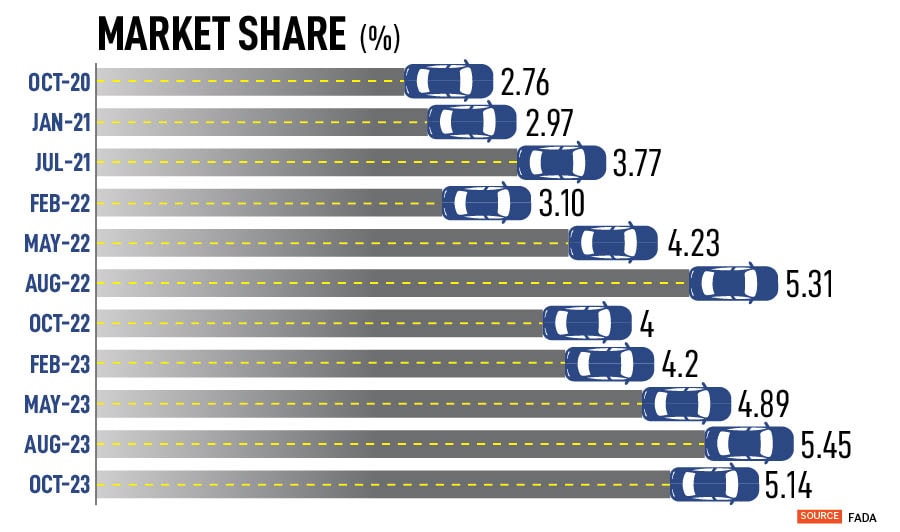
Two decades on, how Toyota finally found its footing in India
Its tie-up with Maruti Suzuki and focus on hybrids have given the company an exponential growth in sales and market share
 Toyota urban cruiser hyryder cafe.
Image: Shutterstock
Toyota urban cruiser hyryder cafe.
Image: Shutterstock
It has been a long wait. But, finally, Japanese automaker Toyota seems to have found its footing in one of the world’s fastest-growing automobile markets, if its sales numbers are anything to go by. With a diverse portfolio ranging from small hatchback Glanza to hybrid mid-size SUV Hyryder and large MPV Hycross, Toyota has been posting record month-on-month growth this year, and is on track to deliver its best year since the company began operations almost three decades ago.
This year, sales between January and November stood at 210,497 units, up 40 percent over the same period in 2022, at 149,995 units. In September, the automaker posted its highest-ever sales at almost 23,000 units, and is now close on the heels of Kia Motors in the pecking order. Toyota has a market share of 5.14 percent compared to Kia’s 5.95 percent as of October.
All that has meant that the automaker is now gearing up to set up a third plant in Karnataka at an investment of Rs 3,300 crore, which will help the company ramp up its capacity to over 440,000 vehicles a year, and, in the process, also address some of the long waiting periods for its models. This is the first investment from the automaker in as many as 15 years.
“Basically, it all started last year,” Atul Sood, the vice president of sales and strategic marketing at Toyota Kirloskar Motor, tells Forbes India about the change in fortunes at Toyota. “We've been working towards meeting the needs of a customer. Last year, we started with a full model change with the Glanza and followed that with the self-charging strong hybrid technology introduction of the Hyryder and followed by the Innova Hycross towards the end of last year.”
Today, Toyota operates in India with a slew of models that cater to categories across the industry ranging from Glanza to MPV Rumion that rivals the Maruti Suzuki Ertiga, to its sub-compact SUVs Hyryder and Urban Cruiser and the large MPVs Innova Crysta and Hycross. The company also sells popular models such as the Camry, SUV, Fortuner, and Vellfire in the country.









